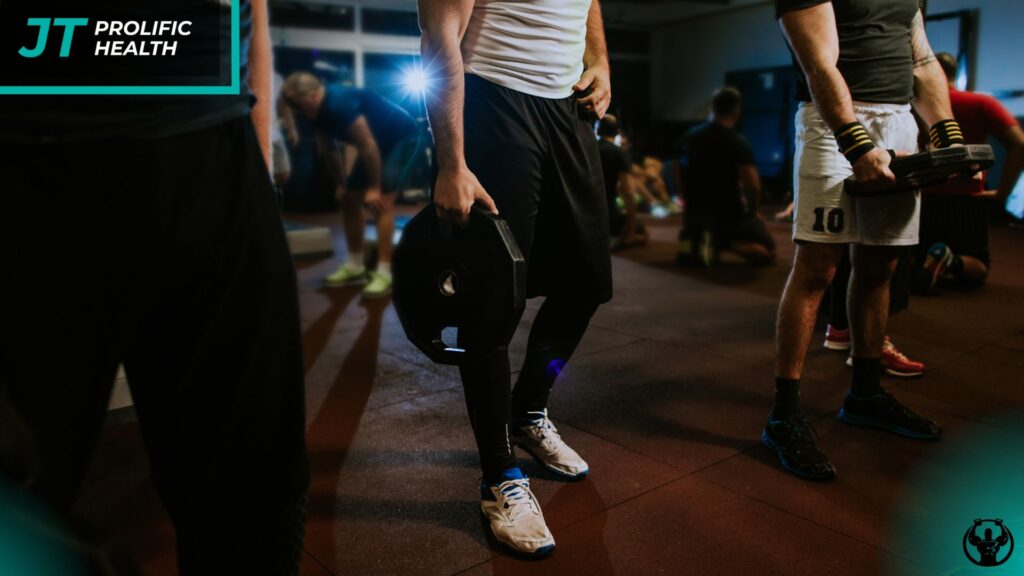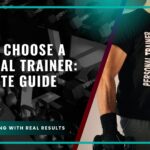Starting a new routine often feels like climbing a mountain. At Prolific Health, we’ve seen countless clients in Richmond and Vancouver transform uncertainty into confidence by laying the right groundwork first. Qualified professionals don’t just design workouts – they map out strategies for nutrition, recovery, and sustainable progress.
Understanding your current abilities and aspirations is critical. Trainers with Level 3 certifications assess mobility, past injuries, and lifestyle factors to create realistic plans. This tailored approach prevents burnout and keeps you motivated when challenges arise.
Our team emphasizes mental readiness as much as physical prep. Clear objectives and open communication help sessions stay focused. Whether you’re aiming for strength gains or better endurance, small preparatory steps make the journey smoother.
Key Takeaways
- Certified trainers create customized plans based on health history and targets
- Honest self-assessment improves workout safety and effectiveness
- Nutrition and recovery are integral to long-term success
- Mental preparation reduces anxiety about initial sessions
- Qualified professionals hold at least Level 3 certifications
Understanding Your Fitness Journey
Your fitness journey starts with knowing your starting point and destination. At Prolific Health, we help clients across Canada bridge this gap through structured self-assessment and strategic planning. Clear direction prevents wasted effort and keeps every workout purposeful.
Identifying Your Goals and Expectations
Begin by outlining what success looks like. Do you want increased stamina for hiking? Better mobility for daily tasks? Write down three priorities:
- Specific targets like completing a 5K run
- Measurable outcomes such as losing 10 pounds
- Time-bound milestones for accountability
Personal training programmes thrive on this clarity. Trainers use these details to design sessions matching your energy patterns and lifestyle. Vague aspirations become actionable steps.


Recognising Your Current Fitness Level
Honesty matters when evaluating capabilities. Track baseline metrics:
- How long can you sustain brisk walking?
- What weights feel challenging during strength exercises?
- Which stretches cause discomfort?
Current fitness assessments protect against injury while highlighting growth areas. Share results with your trainer, including past injuries or time constraints. This data shapes realistic timelines and exercise variations.
Remember, motivation fluctuates. Note what kept you engaged during previous attempts – group classes, progress charts, or specific rewards. These insights help trainers build consistency into your journey.
How to Prepare for Personal Training to Kickstart Your Success
Establishing clear direction before starting ensures every session moves you closer to results. At Prolific Health, our Richmond and Vancouver teams integrate provincial health standards with customized strategies, creating programmes that respect your unique needs while meeting national activity guidelines.


Clarifying Your Personal Objectives
Define three specific targets before meeting your trainer. Instead of vague ideas like “get fit,” focus on measurable outcomes:
- Complete 12 push-ups without stopping
- Reduce waist measurement by 5 cm in 8 weeks
- Attend three weekly sessions consistently
SMART goals transform aspirations into action steps. Writing them down increases commitment – research shows documented objectives have 42% higher success rates. Share these priorities early to help your trainer design sessions matching your energy patterns and schedule.
Learning from Local Health Guidelines
British Columbia’s activity recommendations align with Health Canada’s 150-minute weekly target. Our trainers incorporate these standards while considering:
- Family medical history affecting exercise choices
- Medication impacts on heart rate or recovery
- Preferred workout times for maximum consistency
Explore community resources like Vancouver’s outdoor fitness parks or Richmond’s walking trails. These complement studio sessions while keeping routines engaging. Bring notes about past injuries and current supplements to your assessment – small details shape safer, more effective plans.
Preparing Mentally and Physically for a Training Session
Your mindset can be the strongest muscle you train. At Prolific Health, we prioritize balanced preparation that combines psychological readiness with bodily awareness. This dual focus helps clients across British Columbia approach each session with clarity and purpose.


Setting Realistic Expectations
Initial workouts often feel unfamiliar. Your trainer might introduce movements that challenge coordination or equipment you’ve never used. Embrace this discovery phase – it’s where growth begins. Progress unfolds through consistent effort, not instant transformations.
Physical readiness starts before arriving. Aim for 7-9 hours of sleep the night before. Eat a light meal rich in complex carbs and protein 90 minutes prior. Hydration matters too – sip water throughout the day rather than chugging it mid-session.
Mental preparation involves managing self-talk. Replace “I can’t” with “I’ll try.” Our trainers notice clients who adopt this mindset achieve better form and endurance. If anxiety surfaces, voice it immediately – adjustments can be made.
- Arrive 10 minutes early to mentally transition into workout mode
- Wear breathable fabrics that allow full range of motion
- Track subtle wins like improved balance or stamina
Post-session soreness typically peaks 24-48 hours later. This signals adaptation, not injury. Communicate discomfort levels honestly – trainers modify intensity accordingly. Remember, sustainable progress thrives on patience and partnership.
Getting to Know Your Personal Trainer and Gym Environment
Trust forms the foundation of effective fitness partnerships. At Prolific Health’s Richmond and Vancouver centres, our certified trainers prioritise transparent communication from day one. This mutual understanding ensures your programme aligns with both capabilities and aspirations.
Discussing Your Medical History and Injuries
Your trainer needs clear details about physical limitations. Prepare notes covering:
- Previous surgeries or joint issues
- Chronic conditions like arthritis
- Medications affecting energy levels
Disclosing past injuries helps trainers modify exercises. For example, knee replacements might require adjusted squat techniques. Open dialogue prevents setbacks while building workout confidence.
Introduction to Prolific Health and Local Training Facilities
Our Vancouver and Richmond gyms feature adaptable spaces for all fitness levels. Explore equipment layouts during orientation sessions. Notice amenities like foam rollers for post-workout recovery.
Local resources complement studio training. Richmond’s Minoru Park offers outdoor circuit options. Vancouver’s seawall provides scenic cardio routes. Ask about community partnerships enhancing your experience.
Pro trainers maintain strict confidentiality with health information. Need clarity on programme adjustments? Contact Prolific Health at 604 818 6123. Let’s transform your fitness journey through shared understanding.
Essential Equipment, Attire and Nutritional Considerations
Proper gear and fuel choices directly influence your ability to push limits safely. At Prolific Health, we guide clients in selecting items that enhance performance while respecting individual needs and preferences.
What to Wear and Bring to a Session
Choose clothing that moves with your body. Moisture-wicking fabrics prevent chafing during dynamic exercises. Consider these essentials:
- Cross-training shoes with lateral support
- Compression sleeves for joint stability
- Adjustable waistbands for varied movements
Pack a gym bag containing:
- Insulated water bottle (minimum 750ml)
- Quick-dry microfiber towel
- Resistance bands for warm-ups
Guidelines on Hydration and Pre-Workout Nutrition
Consume 500ml water 2 hours before your gym session. Pair complex carbs with lean proteins 60-90 minutes prior:
- Oatmeal with almond butter
- Greek yogurt with blueberries
- Whole grain crackers with hummus
Post-workout recovery matters. Within 45 minutes, replenish with 20–30g protein and electrolytes. Our Vancouver and Richmond trainers recommend chocolate milk or quinoa salads for efficient muscle repair.
Tracking Progress and Adjusting Your Training Regimen
Measuring growth transforms fitness from guesswork to strategy. At Prolific Health, we combine body composition analysis with performance metrics to map your evolving capabilities. This approach reveals patterns invisible on bathroom scales.
Assessing Your Performance and Measurements
Initial sessions establish baselines through waist circumference readings and strength tests. Your trainer records benchmarks like push-up counts and plank durations. These metrics highlight endurance gains even when weight loss plateaus.
Weekly check-ins track fat percentage shifts and muscle development. Photos capture posture improvements before numbers change. Celebrate fitting into old jeans or lifting heavier weights – these victories matter as much as kilograms lost.
Adjustments occur when progress stalls or goals evolve. Trainers modify workout intensity based on energy levels and recovery rates. Consistent tracking ensures every session moves you closer to sustainable results.




